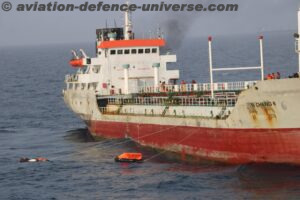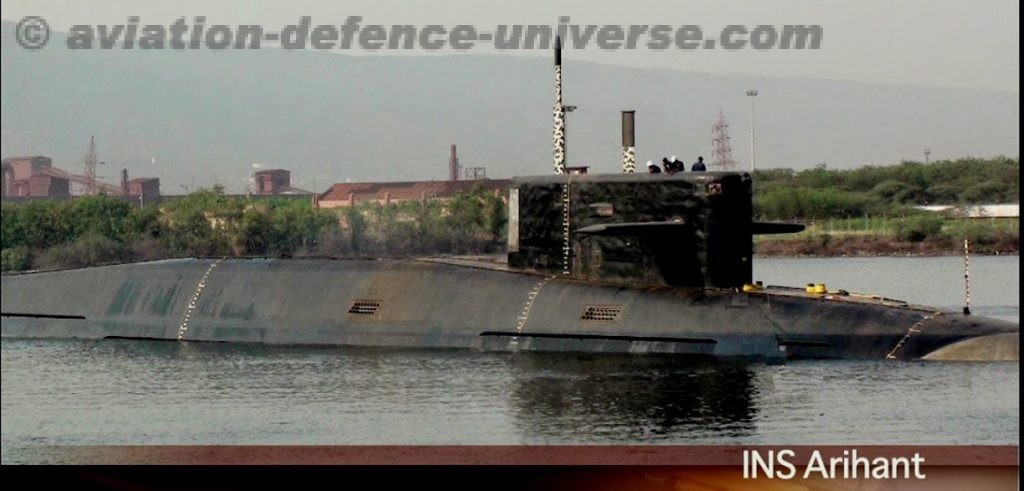
- Indian Navy’s submarine arm turns 55
By Commodore Anil Jai Singh, IN (Retd.)
New Delhi. 08 December 2022. On 8th December, the country celebrates its Submarine Day. It was on this day in 1967 that the Indian tricolour was hoisted for the first time on a submarine, with the commissioning of INS Kalvari on a cold, windy morning in distant Riga, the capital of Latvia in the erstwhile USSR. This also marked the culmination of the Navy’s efforts to establish an undersea warfare capability, which had been pending ever since independence for a variety of reasons, some of which may even seem ridiculous in the current context but were obviously good enough then to stall the process in the government’s approach to national security at that time. The Indian Navy, which had commissioned its first aircraft carrier, INS Vikrant in 1961 was finally a three dimensional navy, an essential pre-requisite for its blue water aspirations.

In the 55 years since, the submarine arm has come a long way and constitutes the cutting edge of the Indian Navy’s offensive capability. There is one nuclear powered ballistic missile submarine (with another one likely to be commissioned soon), and 15 conventional submarines in commission. While these numbers may seem impressive, they are woefully inadequate to address the country’s present and future maritime security challenges.
In 1999, the Cabinet Committee on Security (CCS) had approved a 30-year plan for indigenous submarine construction. This plan, restricted to conventional submarines (SSK) envisaged the construction of 12 submarines in two separate programmes (Project 75 and Project 75-I) of six each in collaboration with a foreign submarine OEM, and thereafter, with the expertise gained, build another 12 without foreign support. This would have ensured a force level of 18 to 20 modern SSKs by 2030 and follow-on construction thereafter to replace the ageing submarines. The first contract for six Scorpene class submarines, to be built at MDL Mumbai was concluded in 2006 with Naval Group ( formerly DCNS), the French submarine builder. As 2022 draws to a close, four of these six submarines ( designated the Kalvari class) have been commissioned ; the fifth is likely to get commissioned shortly and the sixth another year later. The programme for the second tranche of six submarines (Project 75-I), which should have been well underway by now, and for which the Defence Acquisition Council (DAC) accorded the first Acceptance of Necessity (AoN) way back in 2010, is still being discussed at various levels; an optimistic guesstimate would suggest that the first submarine of this project is still more than a decade away. Hence, by the end of this decade, the IN, instead of having 18-20 modern SSKs as envisaged in the 30-year Plan, will probably have at best about 16, of which 10 will be between 30 and 44 years old. By 2035, with the phasing out of some of these old submarines, the numbers could get further depleted.
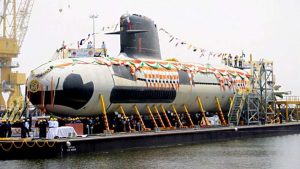
Presently, even the six Project 75 submarines are neither equipped with Air Independent Propulsion (AIP) Systems or Lithium-ion (Li-ion) batteries, the lack of which will considerably constrain their operational effectiveness. Both these technologies are under indigenous development and it is intended to retrofit the Project 75 submarines with the indigenous AIP system. DRDO claims that its is AIP system is ready – a mock-up was even displayed at the republic Day Parade on 26 January 2022. However, its operationalization and fitment on board is unlikely to commence before 2024 when the first submarine of this class (INS Kalvari) begins her first Normal Refit (NR), provided of course, that the system has been proved and productionalised. That in itself is presently a big question mark.
This is hardly a desirable state of affairs in a potentially dense submarine and anti- submarine environment that is likely to emerge in the Indian Ocean, and more specifically, in the littoral waters on our eastern and western seaboards. Presently, there are 14 navies operating SSKs in the Indo-Pacific. Besides India, these include China, Japan, South Korea, Australia, Singapore, Indonesia, Thailand, Myanmar, Bangladesh, Pakistan, Iran, Israel and South Africa. Other than Australia, Thailand, Myanmar, Bangladesh, Iran and South Africa, all others operate AIP equipped SSKs. All three Pakistan Agosta 90B submarines are AIP equipped and it is likely to add another eight AIP fitted Type 039 submarines from China before the end of this decade.
The navy has been highlighting the importance of nuclear attack submarines (SSN) to project a comprehensive blue water presence in the Indian Ocean region. SSNs are perhaps the most potent war fighting platform at sea. Armed with land-attack capable conventional cruise missiles and heavyweight torpedoes, they can do high speeds underwater with unlimited range and endurance, and can shape the operational maritime battlespace to their advantage. For India, SSNs are essential to counter the growing PLA Navy presence in the Indian Ocean, which by 2030 is expected to be significant, with a permanent aircraft carrier presence almost a certainty for containing India’s pre-eminence in the region and furthering its own maritime objectives. The Indian Ocean provides China the oceanic space to exercise its maritime power, and also gain access to the Atlantic Ocean, which its own unfavourable maritime geography does not allow. China also considers India’s strategic location with its southern tip straddling the critical sea lanes leading to the Straits of Malacca, through which most of China’s energy and trade passes as a vulnerability, often referred to as China’s Malacca Dilemma. This is another reason for China wanting to secure its interests in the Indian Ocean with an appropriately suitable naval presence.
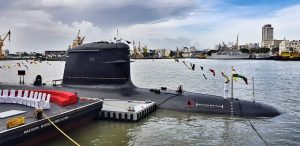
However, despite the obvious advantages and the inescapable requirement of SSNs, the government’s official nod for their construction is still awaited. The navy has also sought an amendment to the 30-year plan for six SSKs and six SSNs from the original plan for 12 SSKs to be built indigenously. This delay is even more surprising since India has been leasing SSNs from Russia at considerable expense to understand the complexities of building, operating, maintaining and supporting these sophisticated platforms. Infact, there are reports that India is leasing an Akula-2 class SSN from Russia for 10 years from 2025 onwards at a cost of US$ 3.3 billion. More recently, it was reported that nuclear submarine cooperation was on the agenda during the French Foreign Minister’s recent visit to India. If indeed India’s assessment of its foreseeable maritime challenges in the next decade necessitates a SSN capability, there is little time to waste. It can be safely assumed that it would take at least 15 years to design, build and operationalise the first SSN once the programme gets the go-ahead from the government and
Contrary to the difficulties being experienced in expediting the SSN and SSK programmes, the strategic submarine programme has progressed quite satisfactorily. Nuclear armed ballistic missile submarines (SSBN) provide the strategic edge with their inherent deterrence capability, either to pre-empt an incoming nuclear strike or deliver a devastating retaliatory response from its concealed position somewhere in the depth of the oceans. The successful deterrence patrol by India’s first SSBN, INS Arihant in November 2018 and its successful ballistic missile launch in October 2022 has validated the credibility of India’s nuclear triad. However, credible deterrence requires at least one SSBN to be on patrol at all times. For this, a minimum force level of four SSBNs is essential. With India’s second SSBN likely to be commissioned soon and at least two more under construction, this requirement should be met by the end of this decade, if not sooner.
The weaponry on board a submarine includes heavyweight torpedoes and missiles, with the former being the primary weapon on board SSKs and the latter being more effective on SSNs and SSBNs. India is still in the process of developing an indigenous submarine launched heavyweight torpedo and is reliant on imported anti-ship missiles for its SSKs. However, it has been successful in developing a SSBN launched ballistic missile, called the Sagarika (K15) with a range of 750 kms and the trials of a 3500 km range ballistic missile from an underwater platform are in progress.
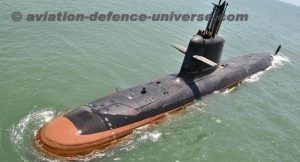 There is now an ever-increasing emphasis on autonomous and unmanned platforms in the undersea domain. UUVs of different sizes, with flexible multi-mission capability and mission specific payloads have emerged as effective force multipliers, supporting and augmenting the effectiveness of submarine operations. The Indian Navy’s Unmanned Roadmap which was released by the Defence Minister in late 2021 would have identified the desired technologies and some initial steps towards the indigenous development of these has probably begun.
There is now an ever-increasing emphasis on autonomous and unmanned platforms in the undersea domain. UUVs of different sizes, with flexible multi-mission capability and mission specific payloads have emerged as effective force multipliers, supporting and augmenting the effectiveness of submarine operations. The Indian Navy’s Unmanned Roadmap which was released by the Defence Minister in late 2021 would have identified the desired technologies and some initial steps towards the indigenous development of these has probably begun.
While this article is primarily about submarines, undersea warfare includes many other facets of naval operations including anti- submarine warfare. The Indian Navy has, in recent years, begun paying more attention towards augmenting its multi-dimensional ASW capability but still has considerable ground to cover. The importance of the undersea domain needs no emphasis. Modern surveillance capabilities have rendered surface forces vulnerable and exposed. Submarines on the other hand still enjoy the element of concealment and surprise that the opacity beneath the waves offers.
Delays and compromises in developing adequate undersea warfare capability due to procedural delays in processing cases, lack of understanding of critical technologies, an inaccurate assessment of indigenous capability, unsophisticated methods of price discovery and the uncertainty in the global order amongst many other reasons are, to say the very least, creating critical capability and capacity deficits in the navy’s combat preparedness, and needs to be addressed urgently.
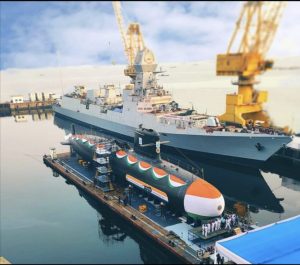 ‘Aatmnirbharta’ or self-reliance in the defence sector is definitely the way ahead. Import dependence is a critical strategic vulnerability that the country can ill-afford. At the same time, a realistic assessment of indigenous capability is very important. Just having an indigenous weapon is not enough if it is inferior in every respect to what the enemy has. This is particularly true of submarine warfare where one has to be able to detect and destroy the enemy at greater ranges and with greater accuracy than the enemy can. India is far behind the global technology curve in weapon and sensor development and this gap will further widen if a more realistic and objective assessment is not done. One way to leapfrog the technological gap is to encourage the induction of contemporary technology through collaborative arrangements with foreign OEMs in a co-development and co-production model of weapons and sensors specifically tailored to our waters. Surprisingly, despite the limitations being obvious, there seems to be a smugness in the establishment that ‘aatmnirbharta’ is the magic wand that will transform the Indian defence landscape overnight. Perhaps this submarine anniversary will be an occasion to introspect on the future trajectory of India’s undersea warfare capability.
‘Aatmnirbharta’ or self-reliance in the defence sector is definitely the way ahead. Import dependence is a critical strategic vulnerability that the country can ill-afford. At the same time, a realistic assessment of indigenous capability is very important. Just having an indigenous weapon is not enough if it is inferior in every respect to what the enemy has. This is particularly true of submarine warfare where one has to be able to detect and destroy the enemy at greater ranges and with greater accuracy than the enemy can. India is far behind the global technology curve in weapon and sensor development and this gap will further widen if a more realistic and objective assessment is not done. One way to leapfrog the technological gap is to encourage the induction of contemporary technology through collaborative arrangements with foreign OEMs in a co-development and co-production model of weapons and sensors specifically tailored to our waters. Surprisingly, despite the limitations being obvious, there seems to be a smugness in the establishment that ‘aatmnirbharta’ is the magic wand that will transform the Indian defence landscape overnight. Perhaps this submarine anniversary will be an occasion to introspect on the future trajectory of India’s undersea warfare capability.
(Commodore Anil Jai Singh is a submarine veteran. He is the Vice President of the Indian Maritime Foundation and a Honorary Adjunct Fellow of the National Maritime Foundation. The views expressed by the author are personal.)








































